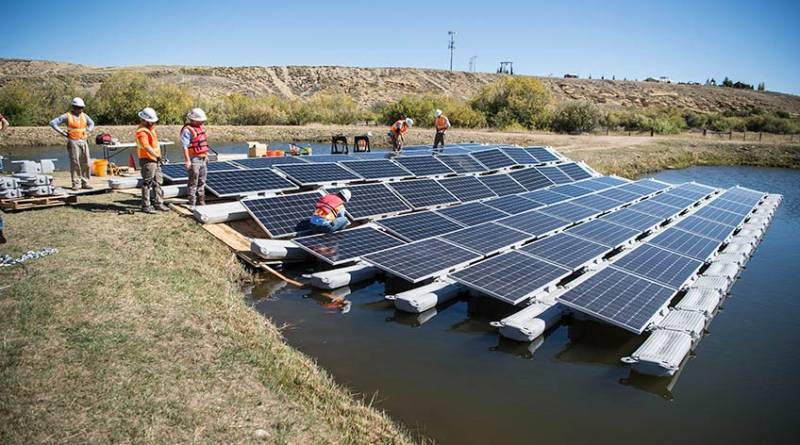Recently published research from the USA’s National Renewable Energy Laboratory indicates “floatovoltaics” could make a significant contribution to electricity generation in the country.
The NREL’s research found 24,419 man-made water bodies would be suitable for floating solar PV. This represented 27% of the number and 12% of the surface area of man-made water bodies in the contiguous United States.
If a quarter of the surface area of these suitable water bodies were covered in solar panels, collectively the floatovoltaic systems could produce the equivalent of almost 10% of current national electricity generation – and that’s a conservative estimate.
NREL points out that many of these suitable reservoirs and dams were in areas with high land acquisition costs and electricity prices, making floating solar an even better fit.
“We’re expecting it to take off in the United States, especially in areas that are land-constrained and where there’s a major conflict between solar encroaching on farmland,” said Jordan Macknick, lead energy-water-land analyst for NREL.
As well as electricity generation, floating solar offers some additional benefits, such as inhibiting the growth of algae and reducing evaporation.
The NREL team’s research has been published in the journal Environmental Science & Technology.
Floating Solar In Australia
Floatovoltaics haven’t had a huge impact in Australia, but a few significant projects have popped up about the place.
Australia’s first floating solar farm went into operation in 2015 at a wastewater treatment facility in Jamestown, in South Australia’s Mid-North. Elsewhere in the state, SA Water is constructing a 100kW floating PV system at its Happy Valley Reservoir in Adelaide’s southern suburbs.
A 99kW floating solar panel array in Lismore, NSW was completed in January last year.
In April last year, NSW Energy and Utilities Minister Don Harwin said the State Government wanted to see private sector investment in renewable energy projects utilising New South Wales’ dams and other water infrastructure – but we haven’t heard much more on that.
According to NREL, there are currently only around a hundred floating solar projects operational worldwide. The largest I’m aware of is a 40MW floatovoltaic project constructed in Huainan, China, which was built on an area that had been inundated due to the impacts of coal mining. Once again, an example of solar energy making use of or cleaning up the mess coal leaves behind.
A significant project about to start construction is in Singapore, where a 5MW floating PV array will be constructed in Johore Strait.


 RSS - Posts
RSS - Posts



After the mass fish death from over-drawing water and concentrated blue-green algae toxins, I’m surprised that floating voltaics haven’t been considered for every water course, dam and reservoir in Australia.
https://www.abc.net.au/news/2019-01-09/menindee-mass-fish-deaths-spark-blame-game/10699734
My thoughts exactly. Man made dams could be built, the panels would vastly reduce evaporation (especially in the outback), and if the panels only touched the land where they are anchored, the rest of the dam wall and water would be accessible to animals for drinking, pumps to irrigate, etc. Win win for property owners in Australia! Brilliant idea.
What happens when a bunch of water birds start constantly landing/pooping and nesting on the panels.
It dries up and the wind blows it off and/or the rain washes it off?
The affect of soiling on solar panels is grossly overstated.
Panels covered in sand-dust in Saudi Arabia reduced output by 5% vs clean panels …
In areas of the world, where water falls from the sky, solar panels at any reasonable inclination are self-cleaning.